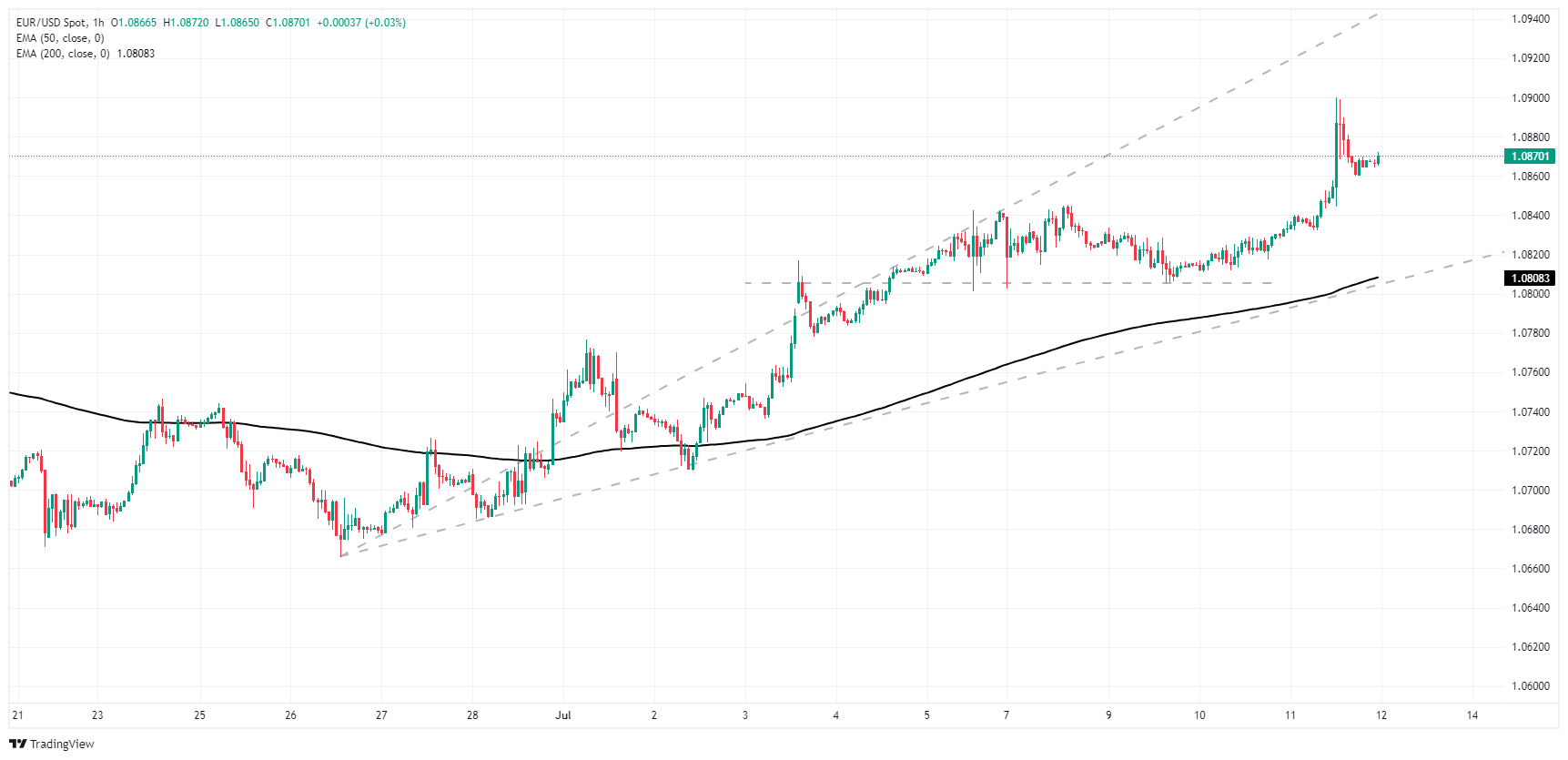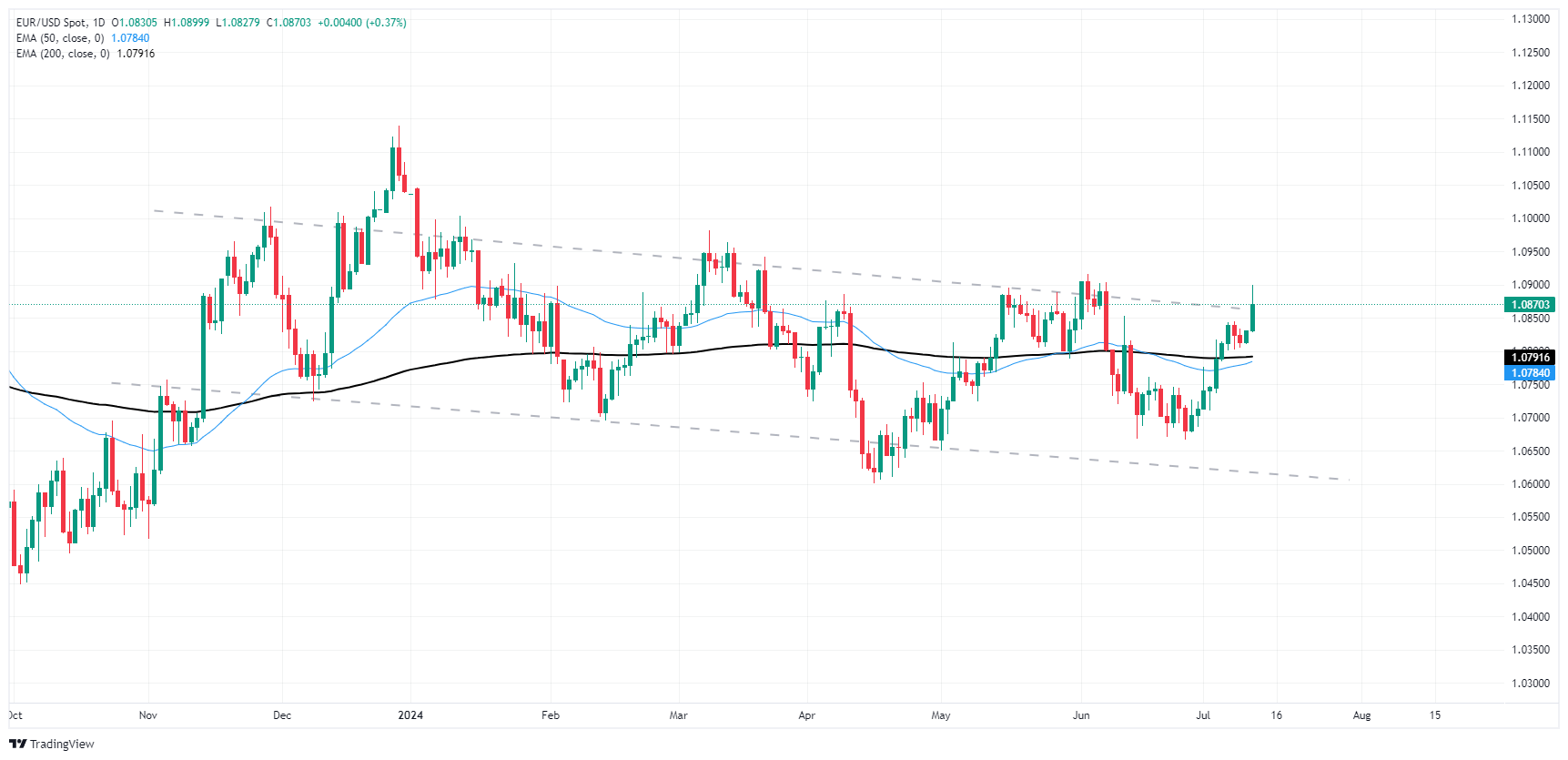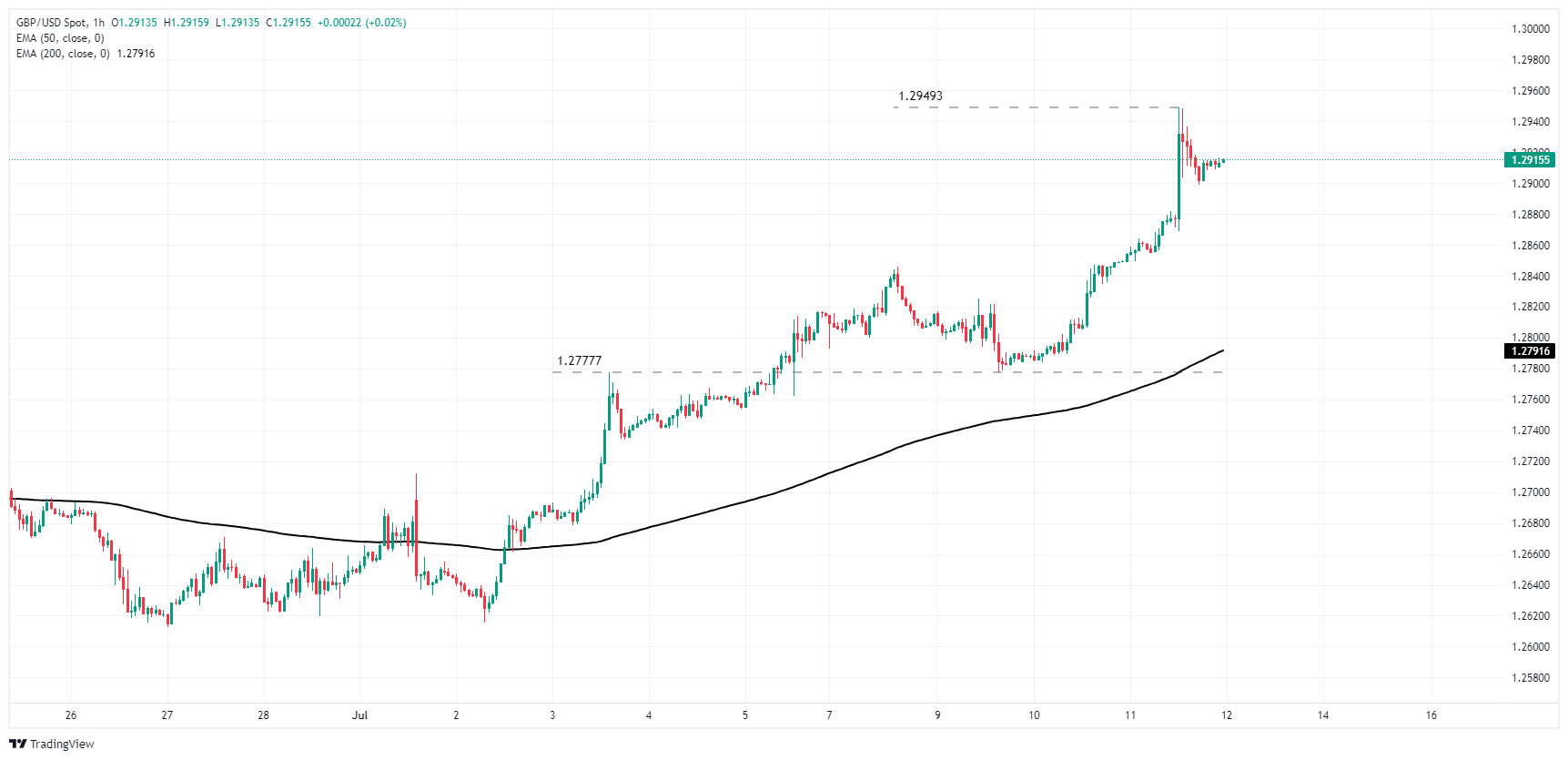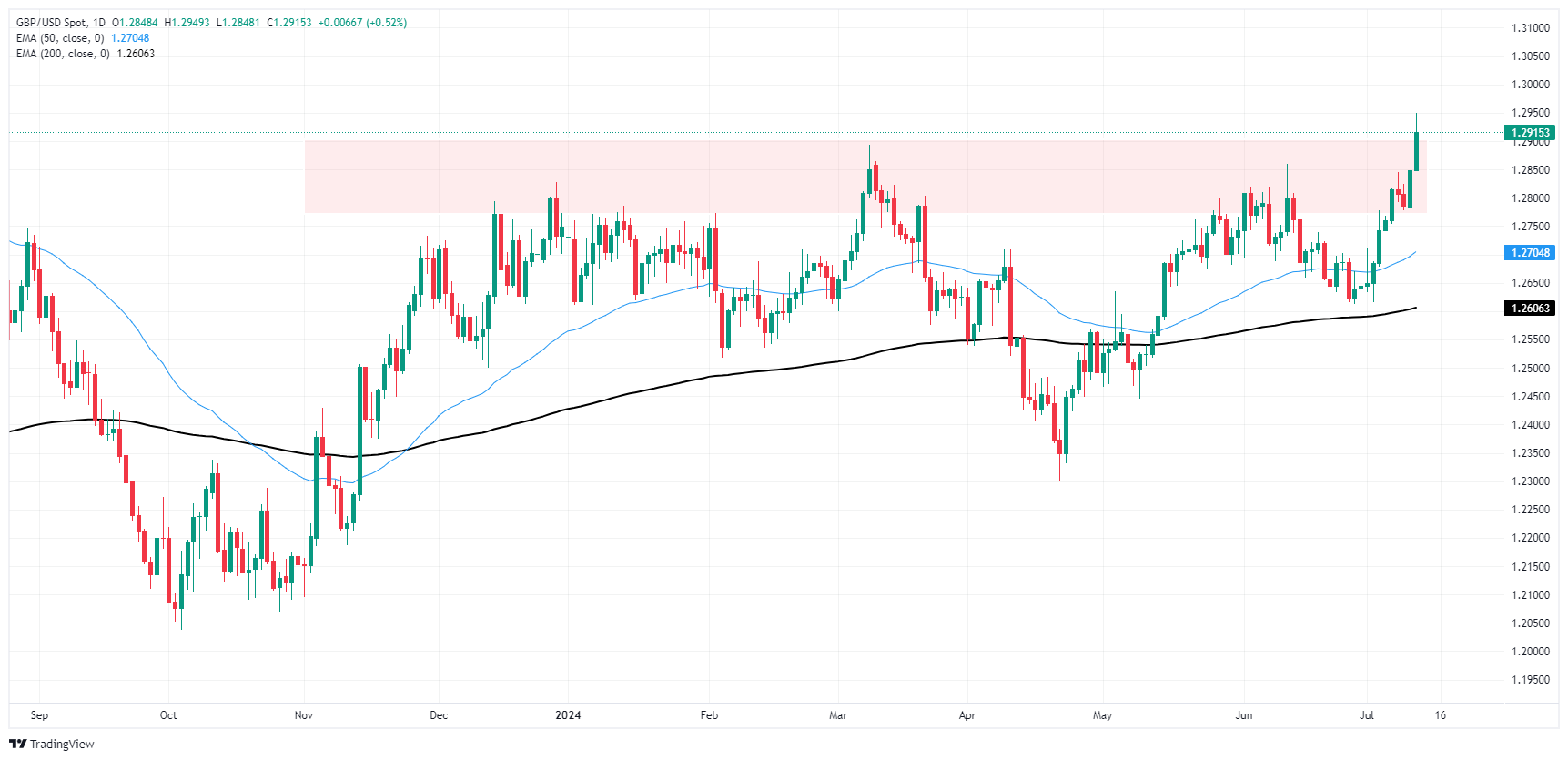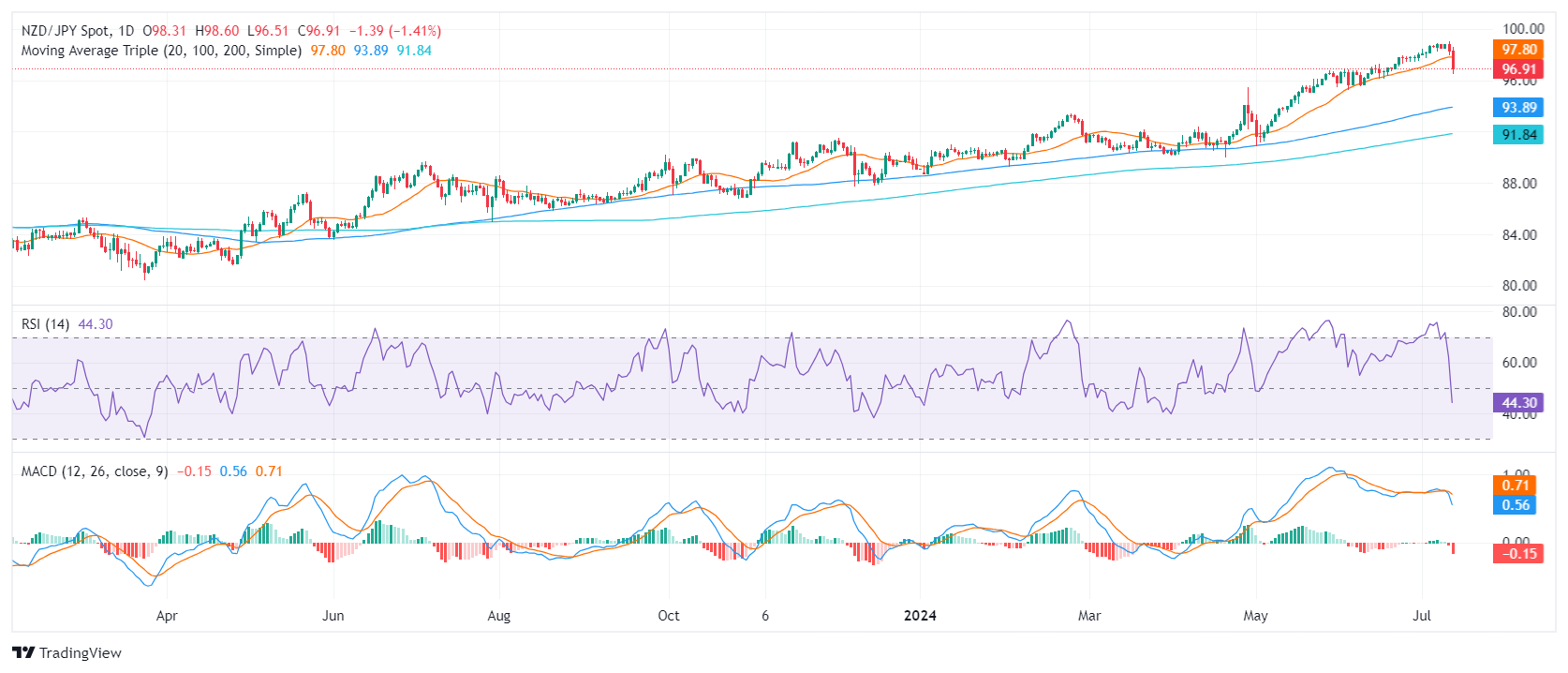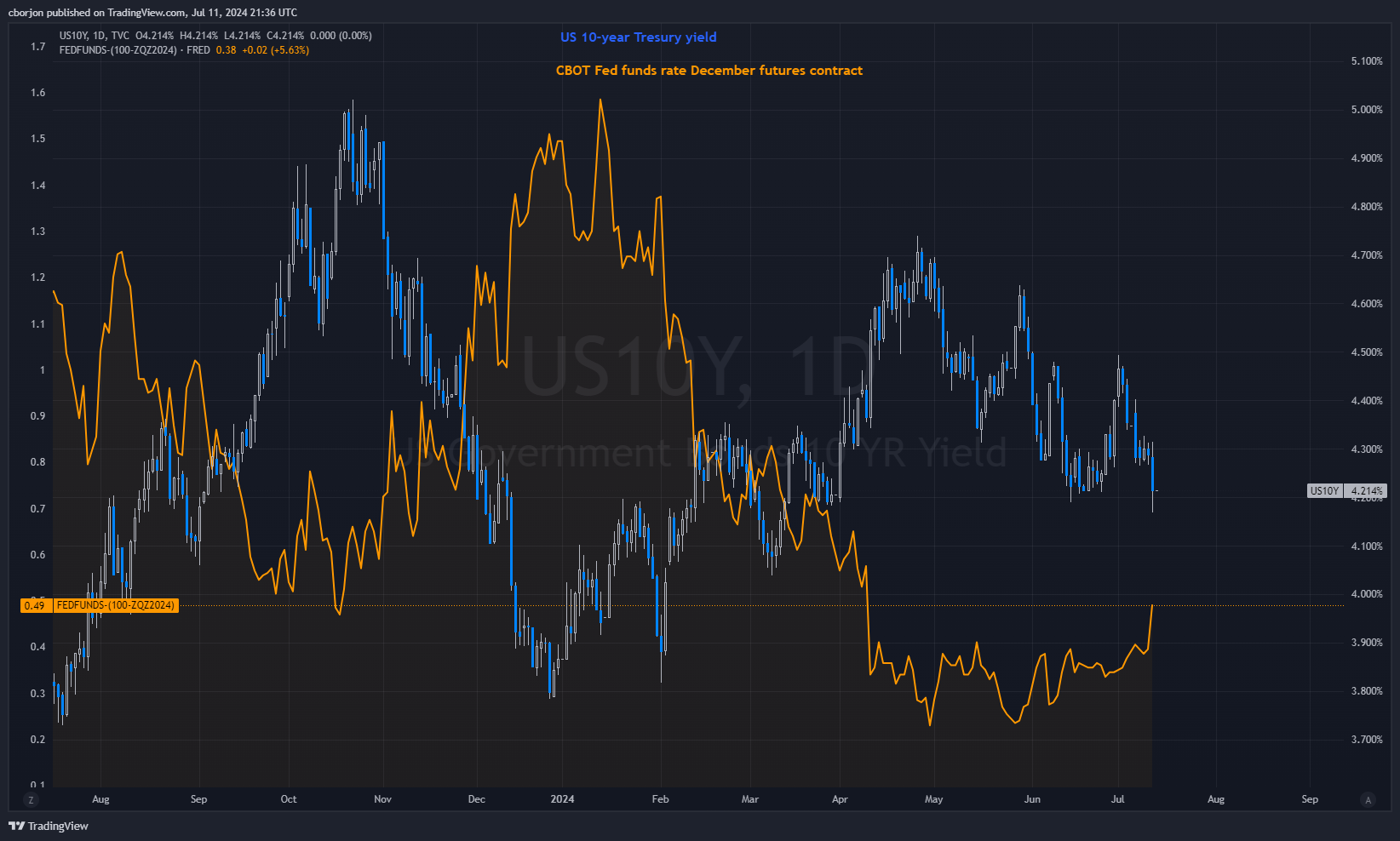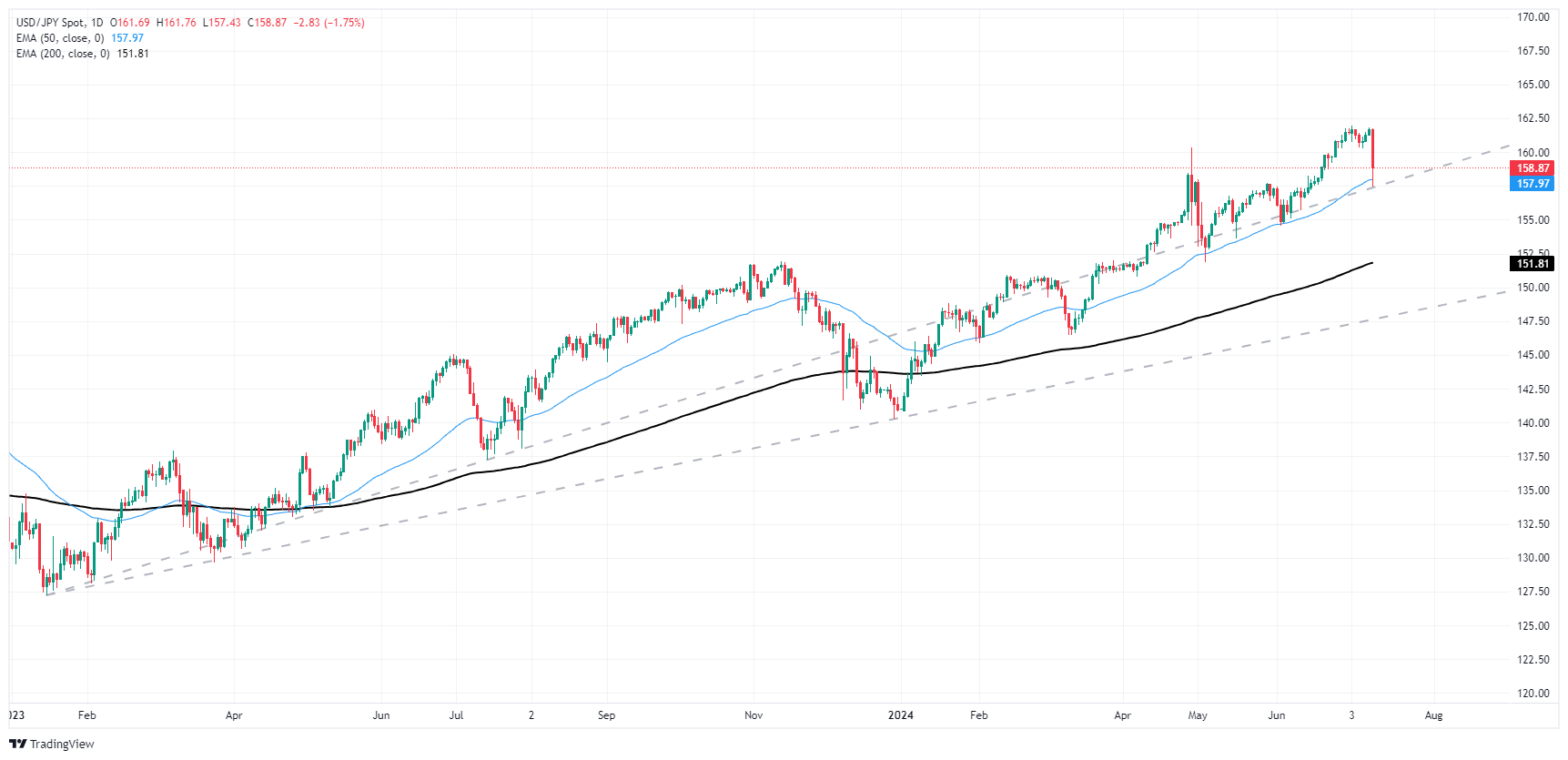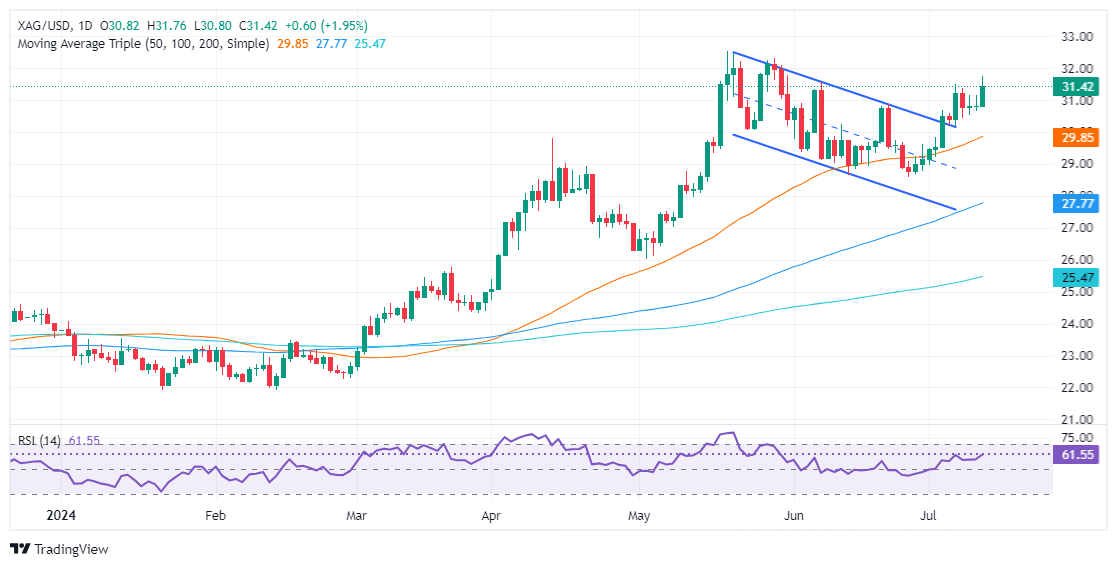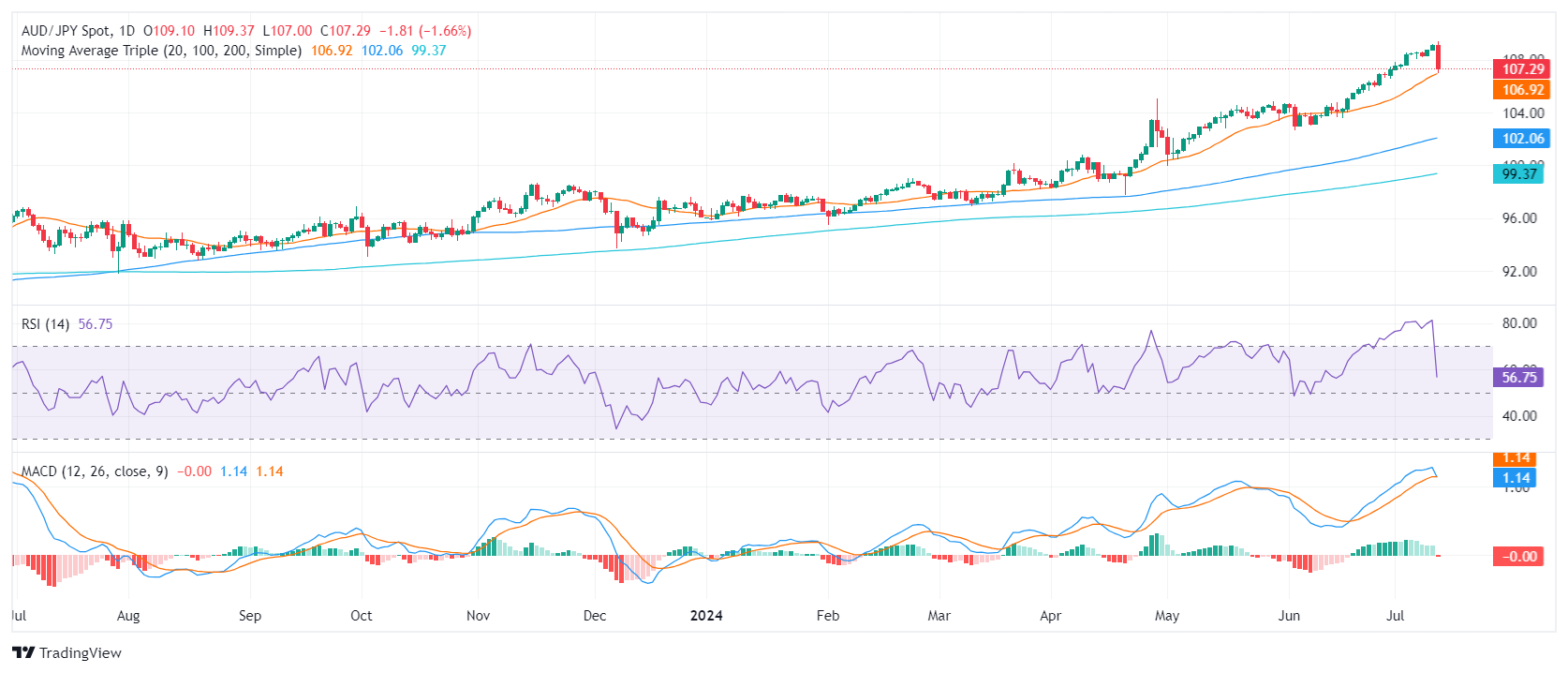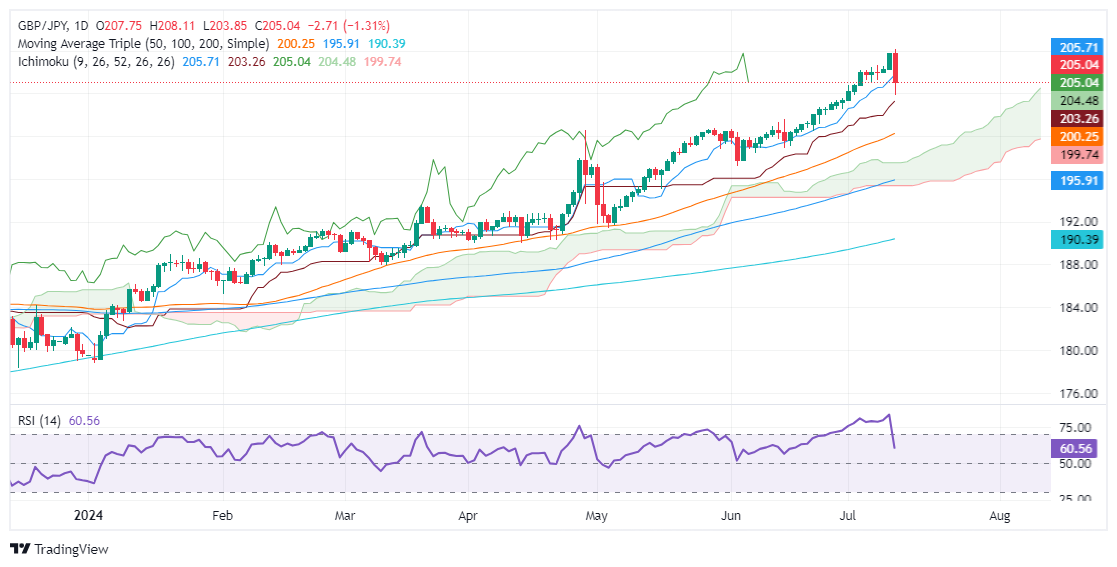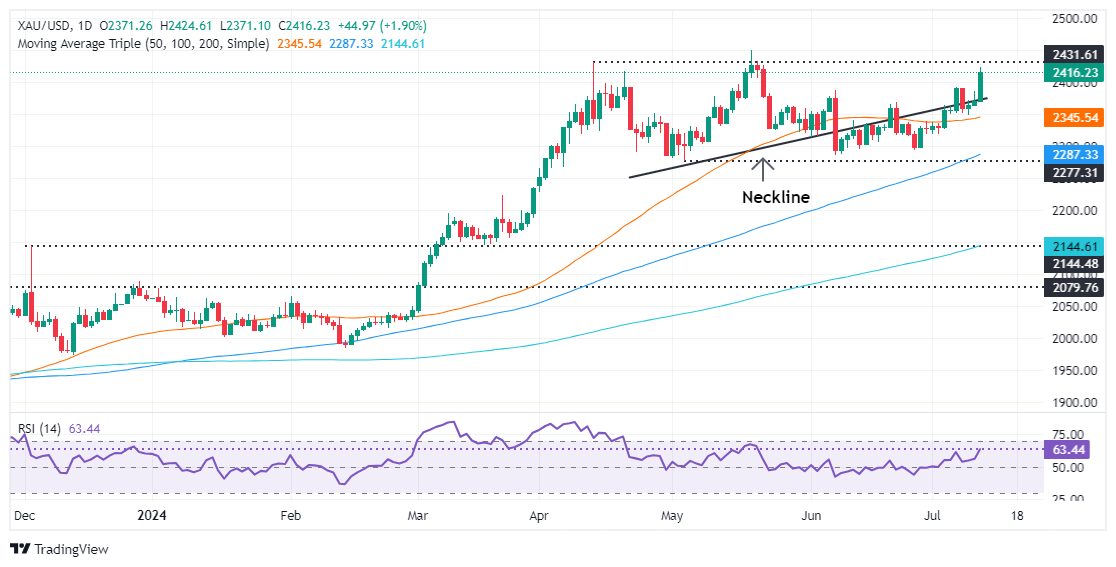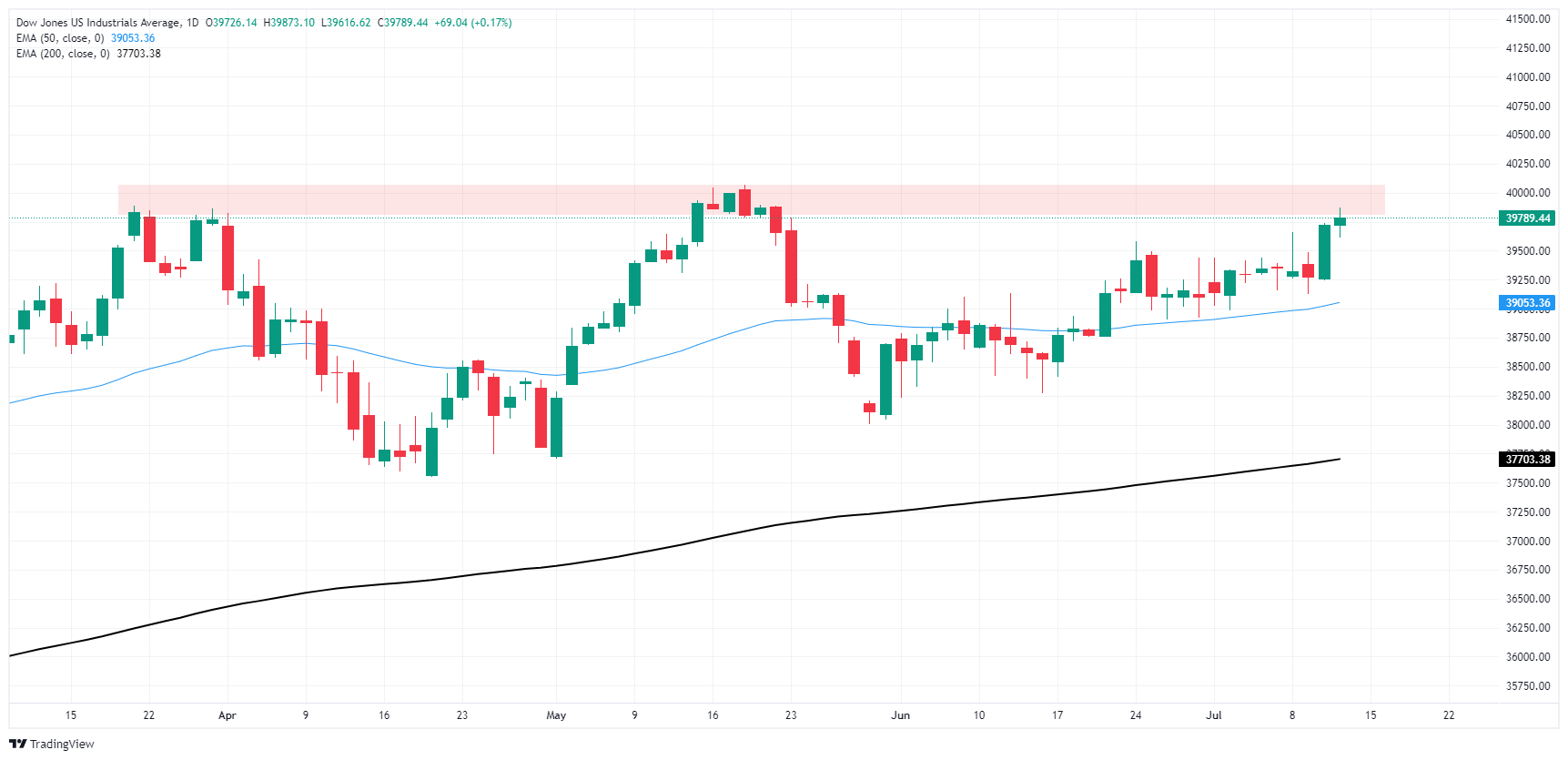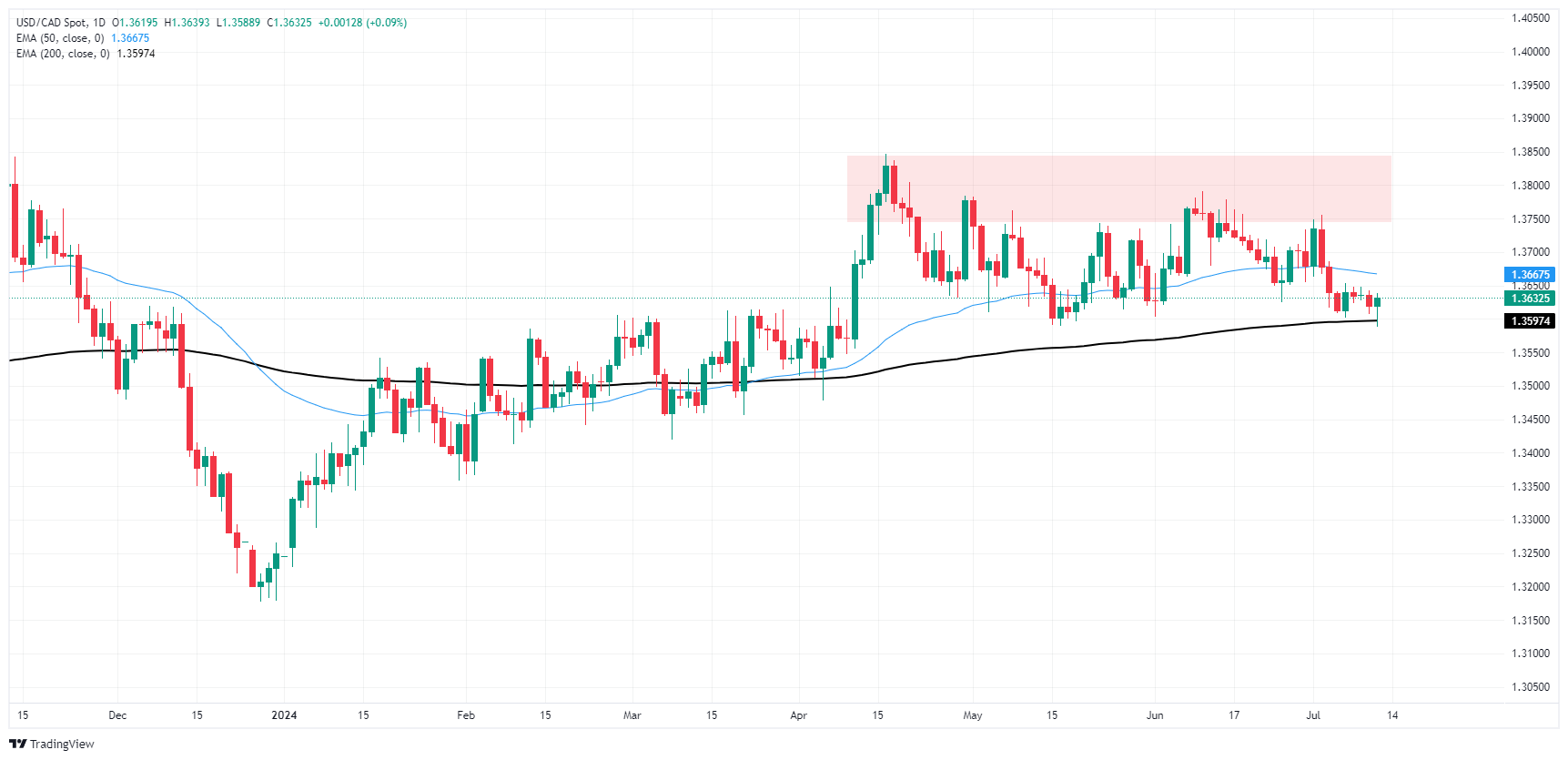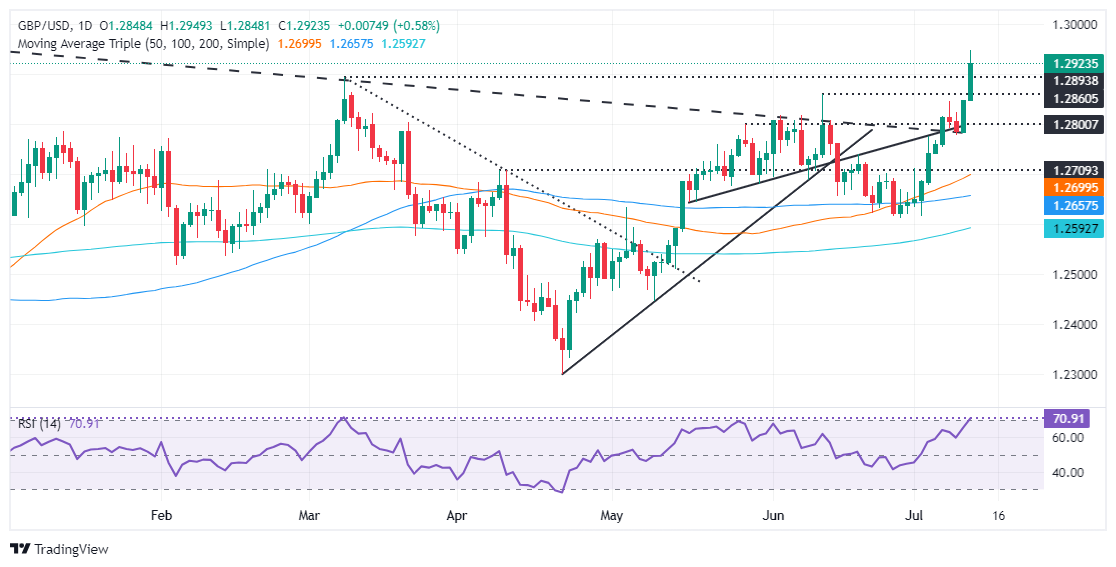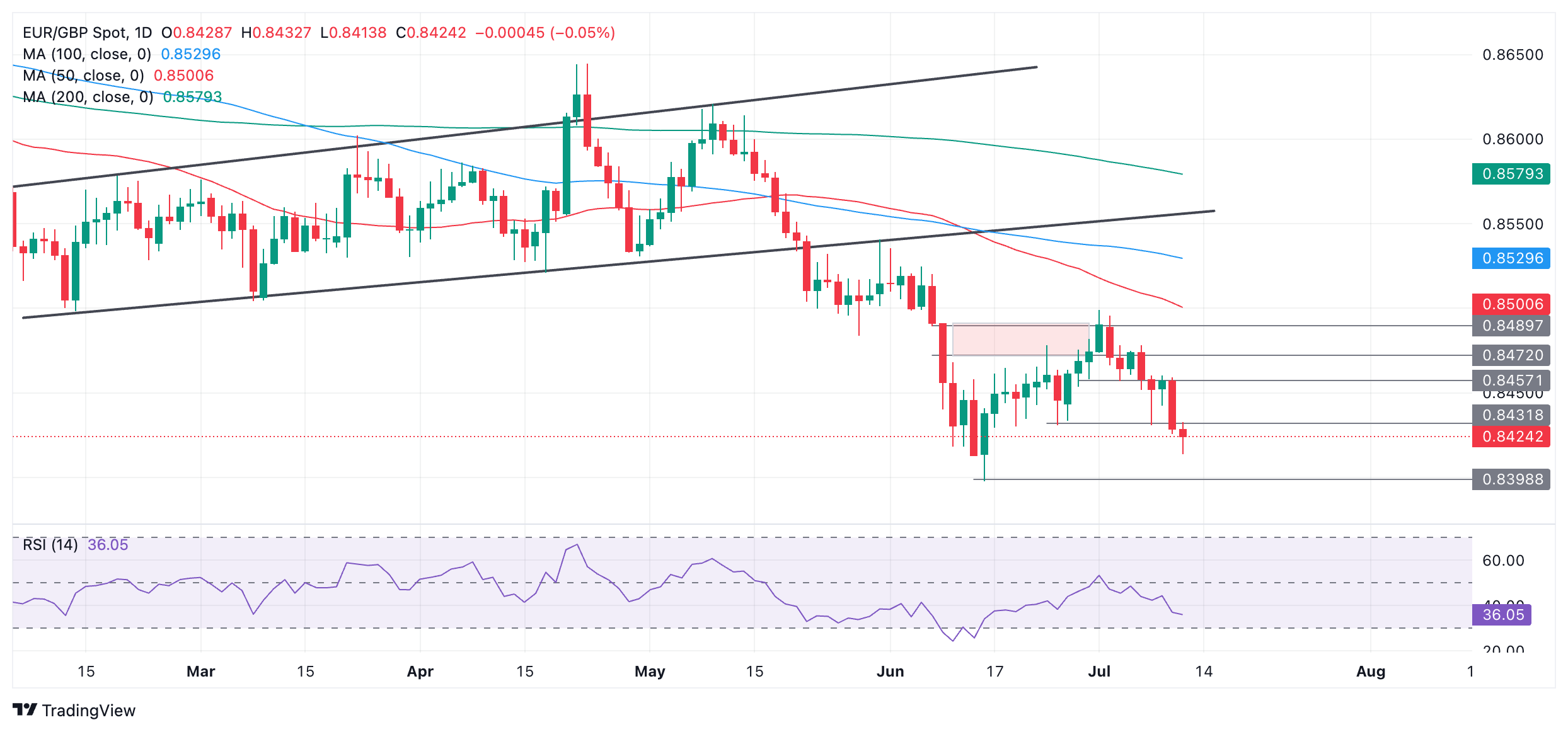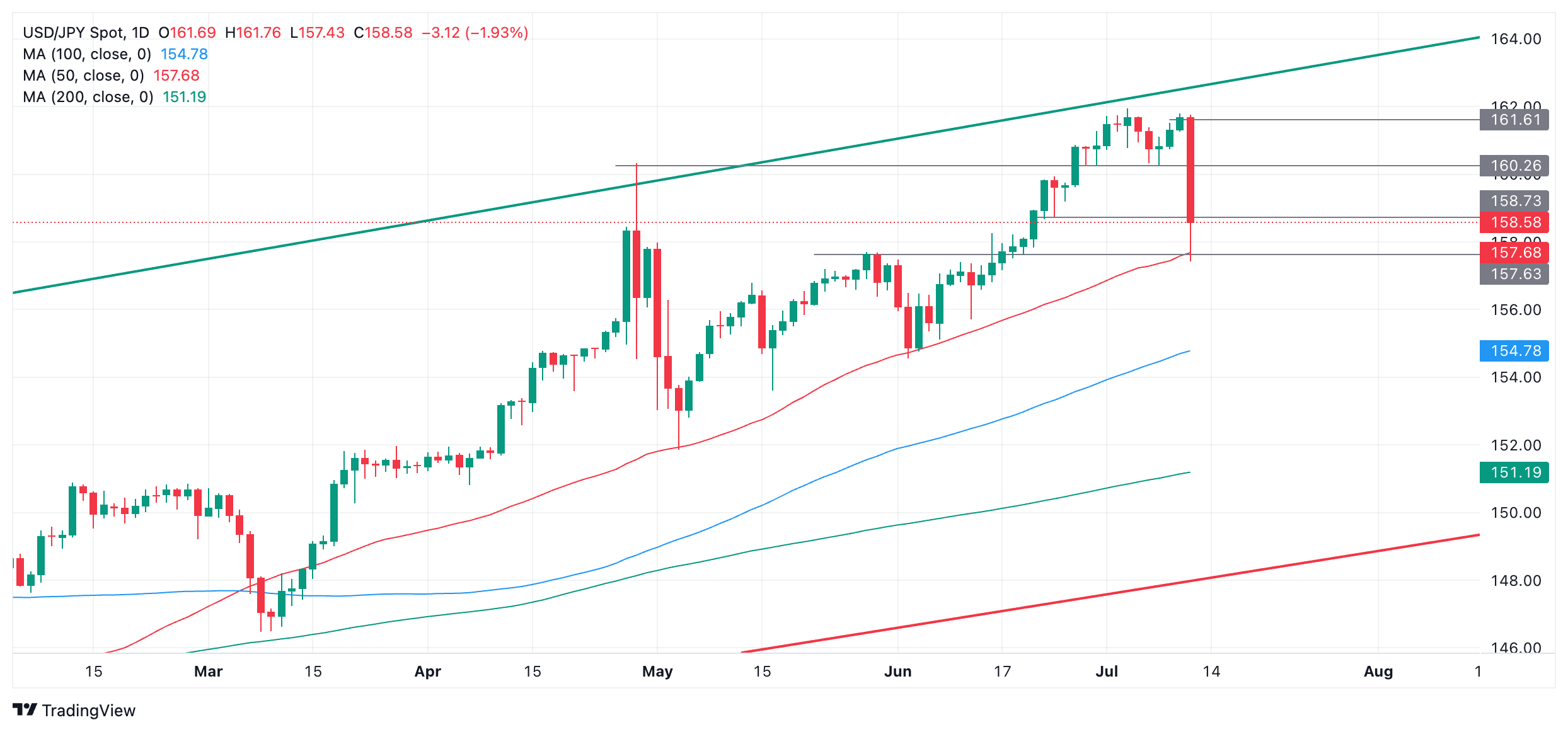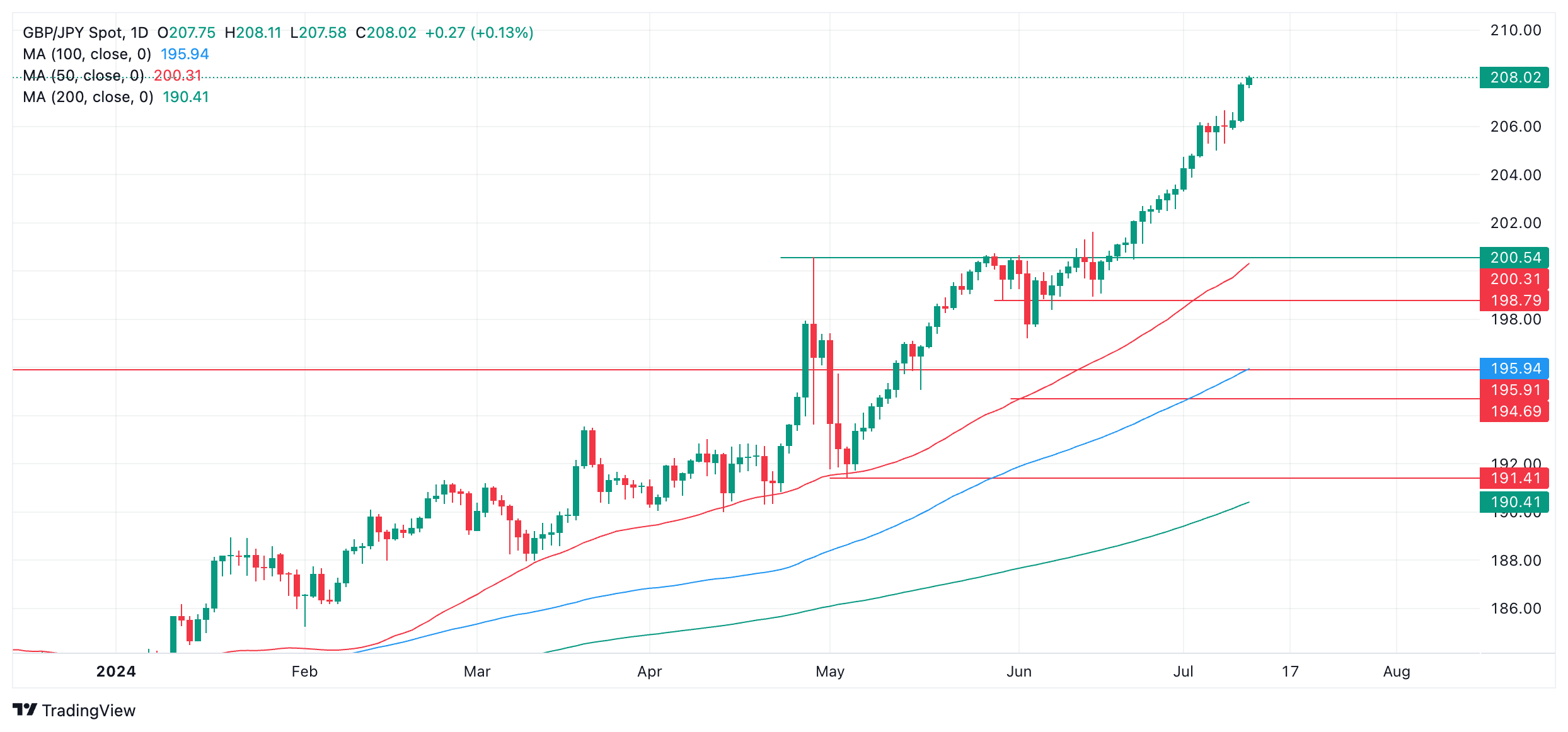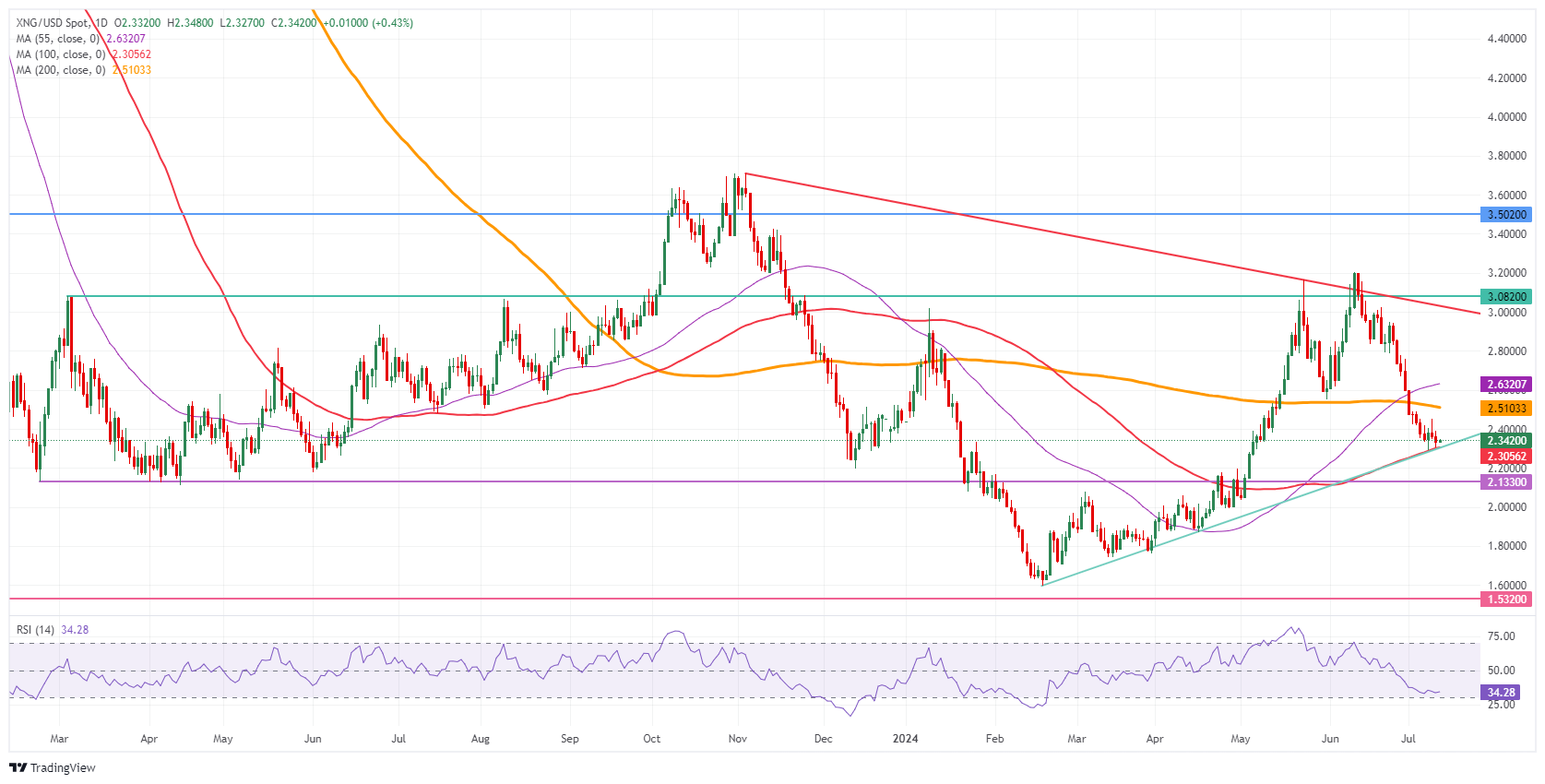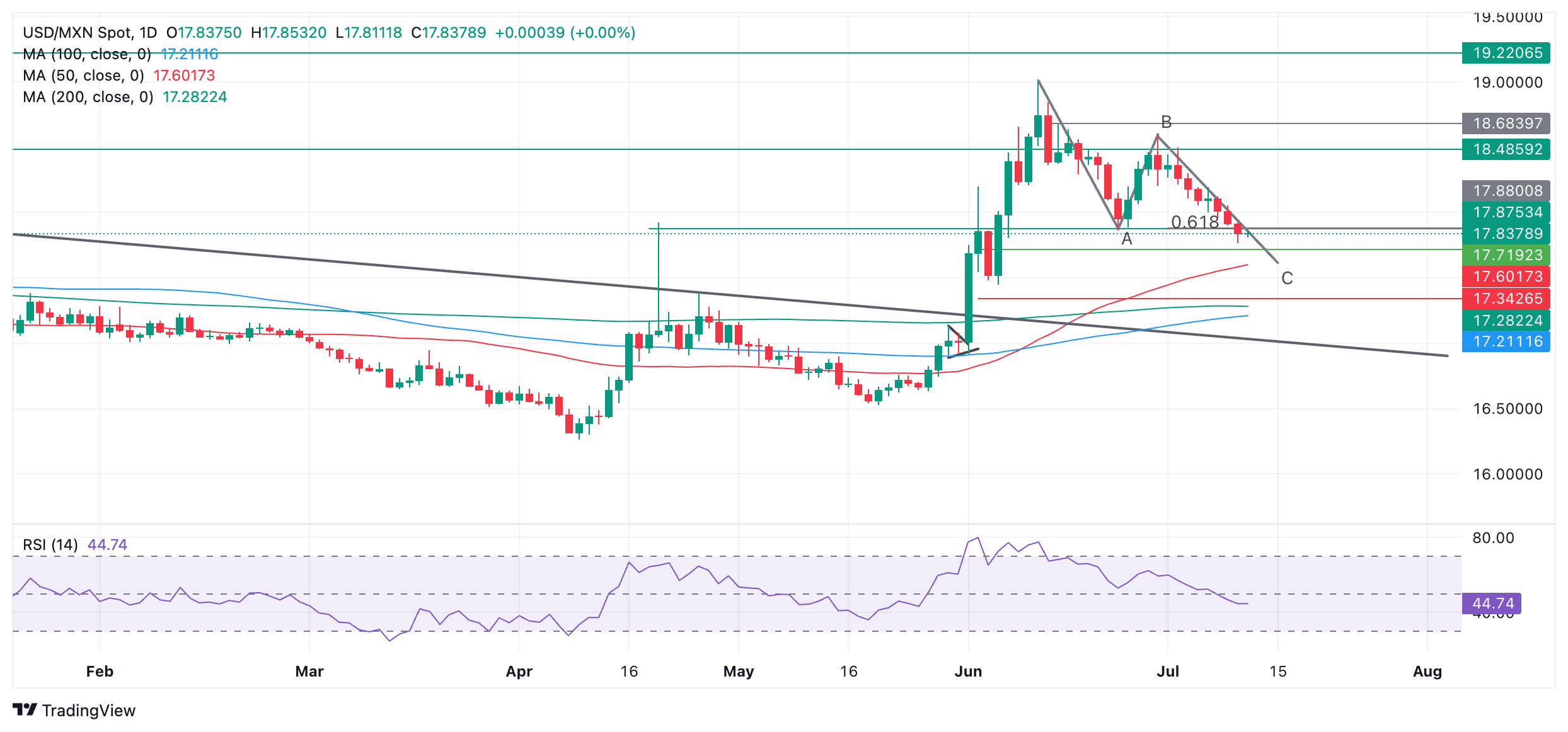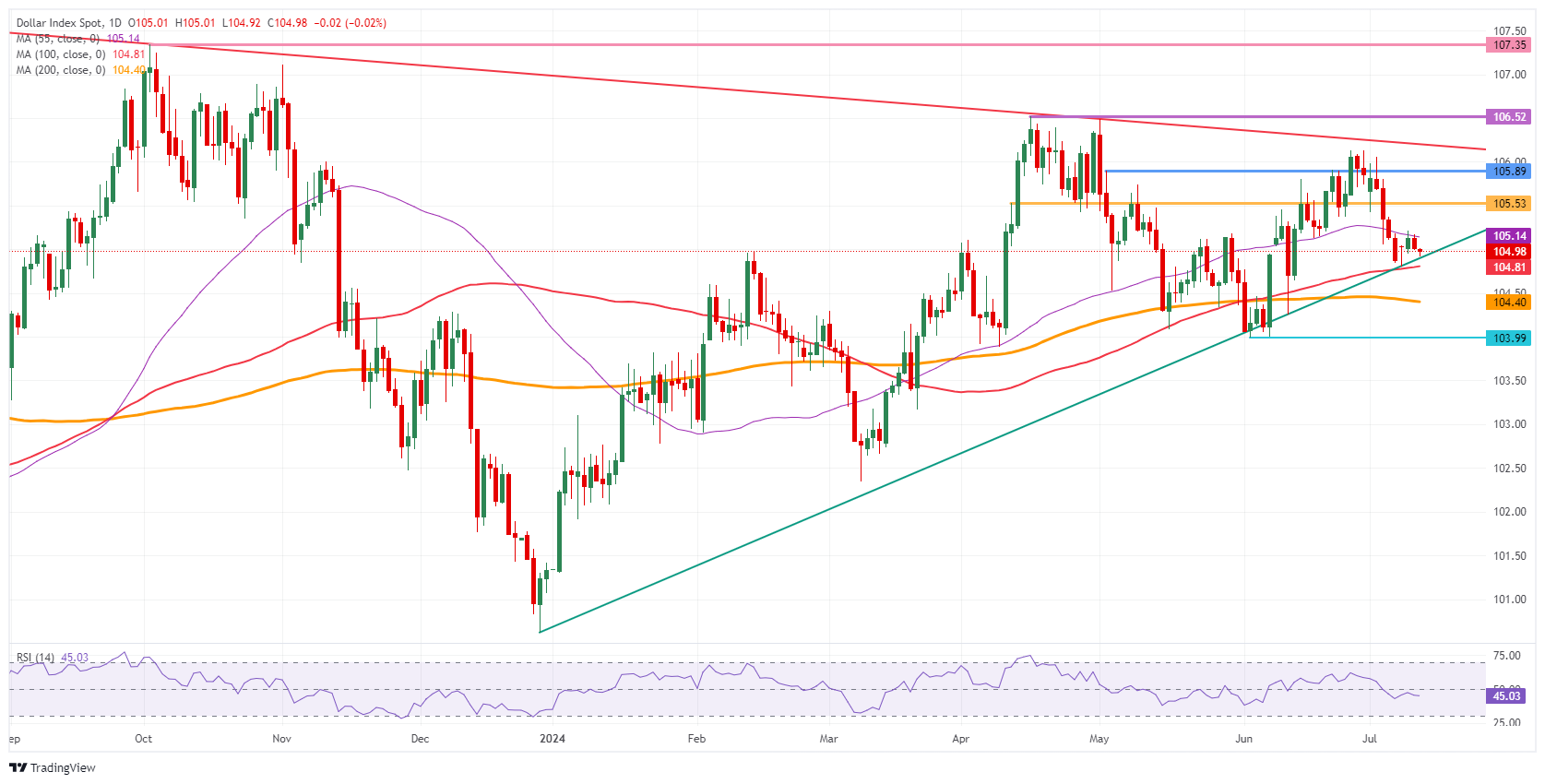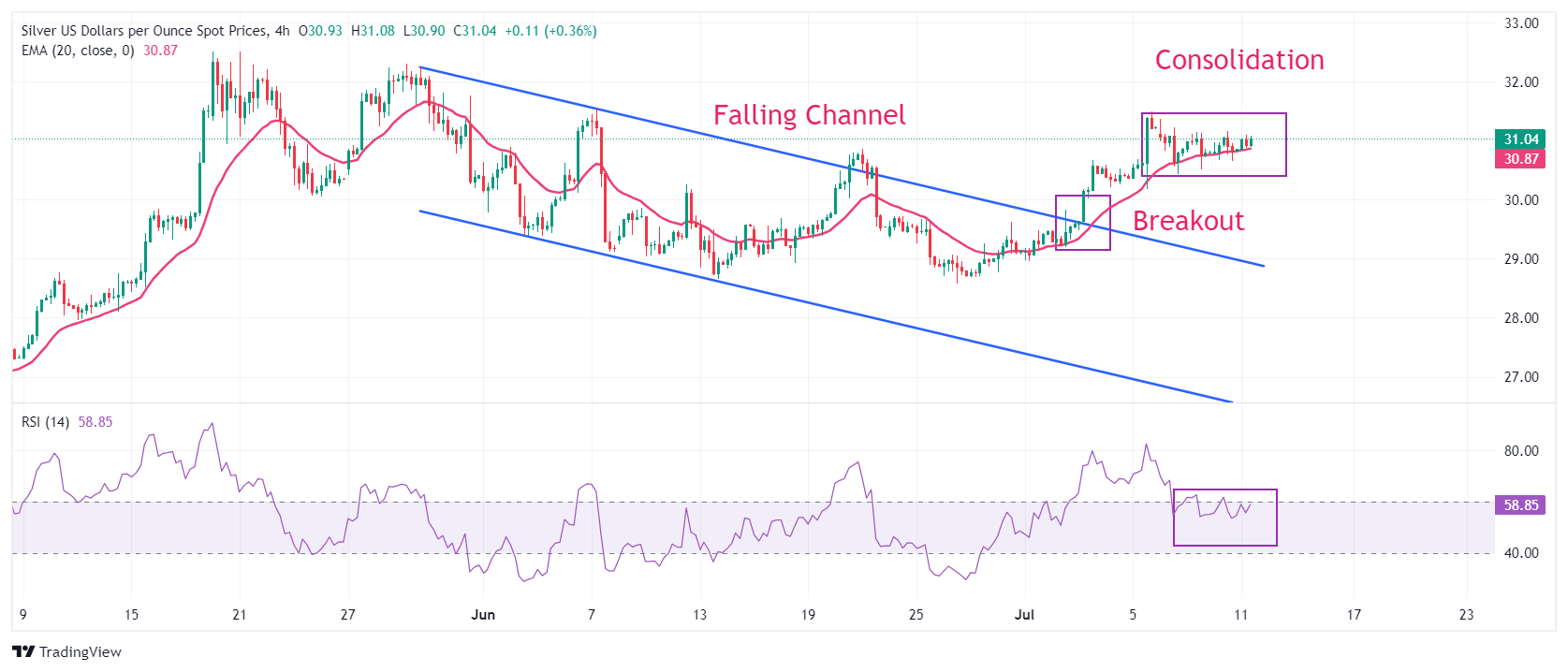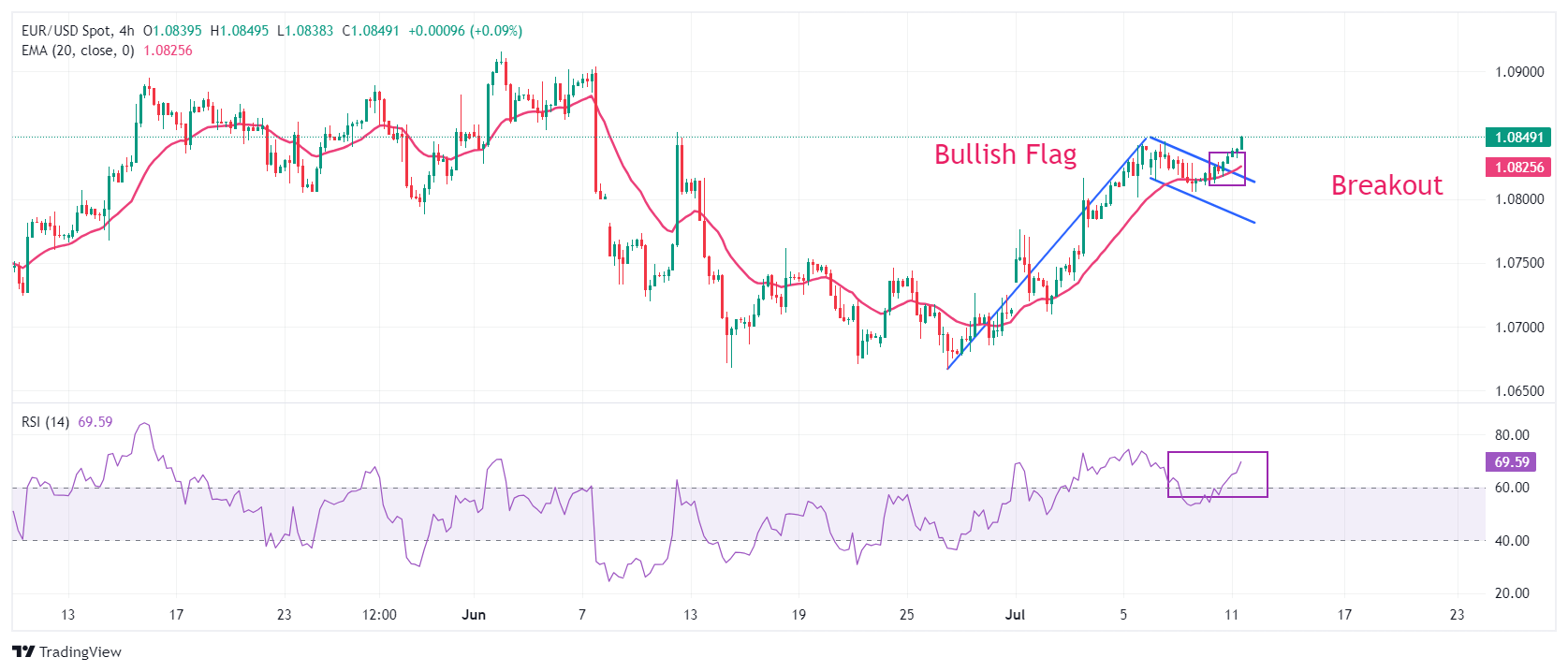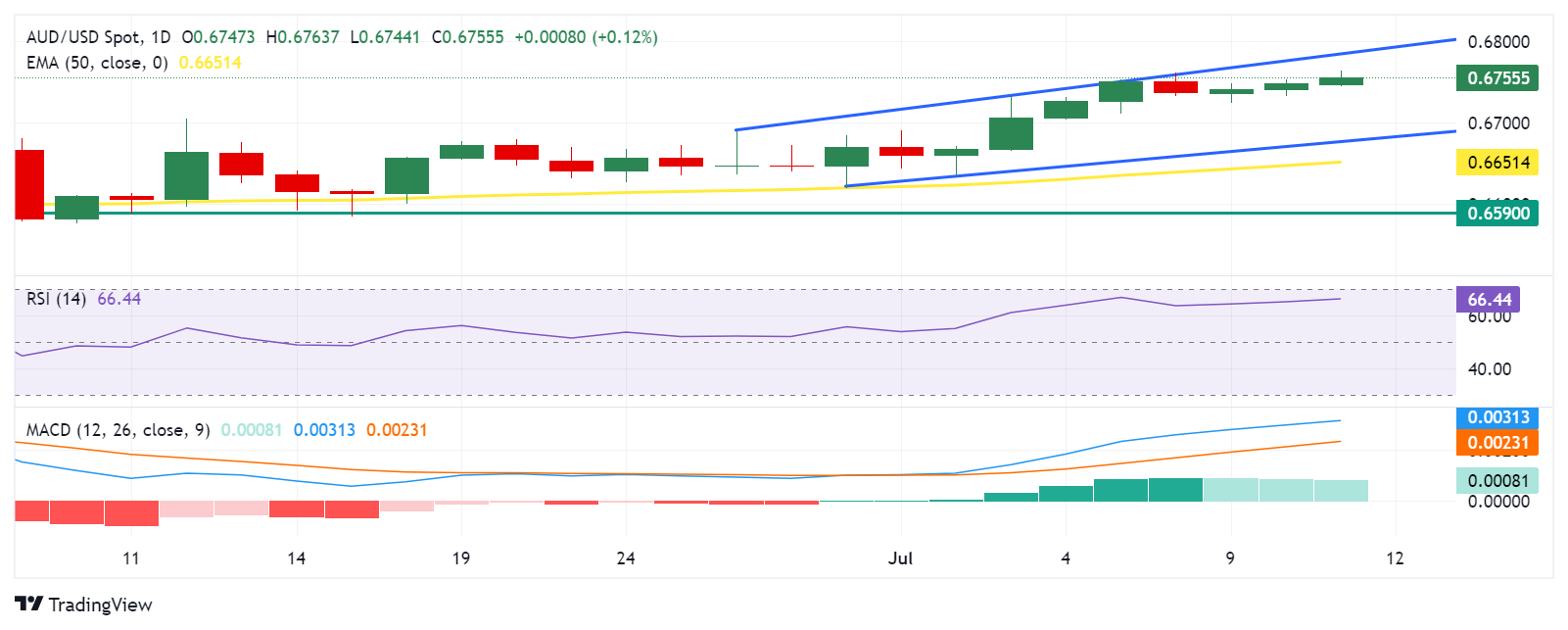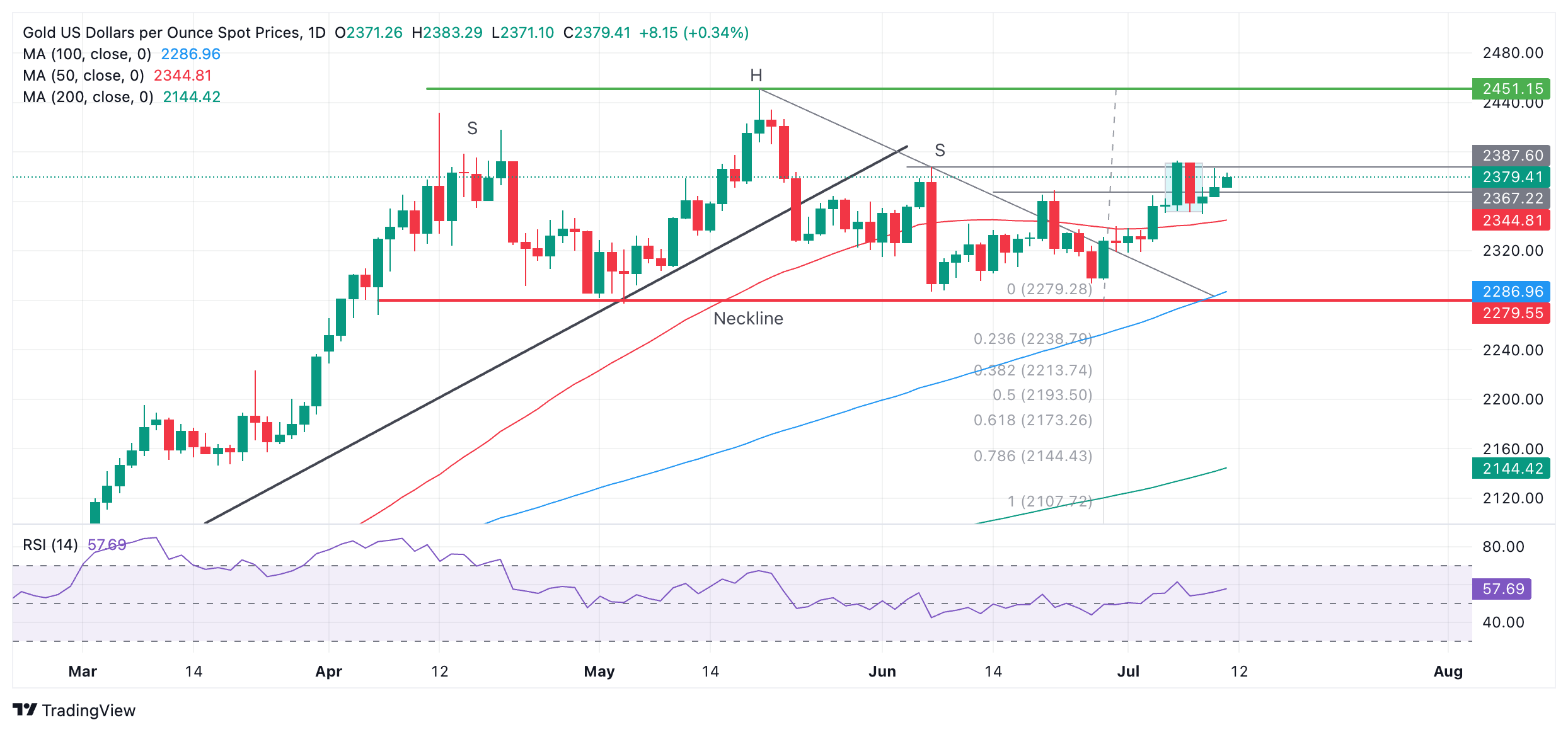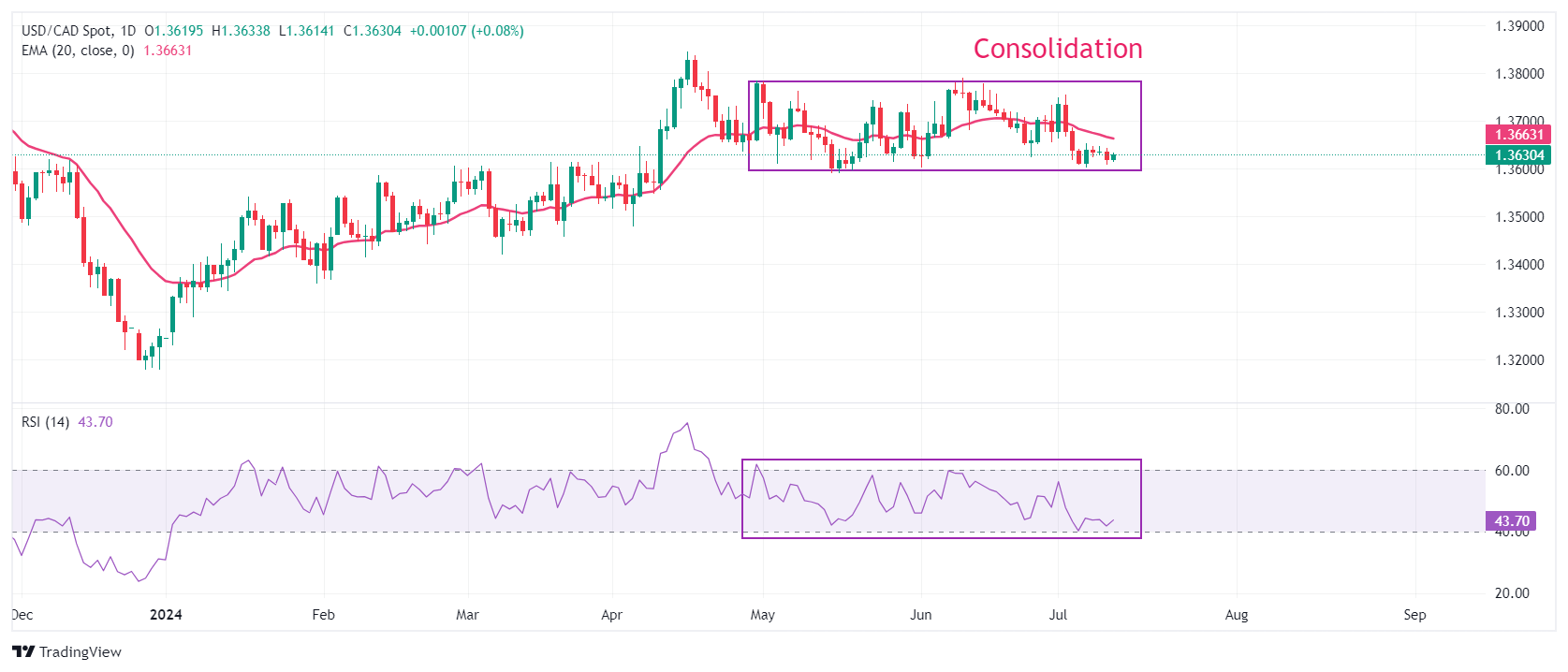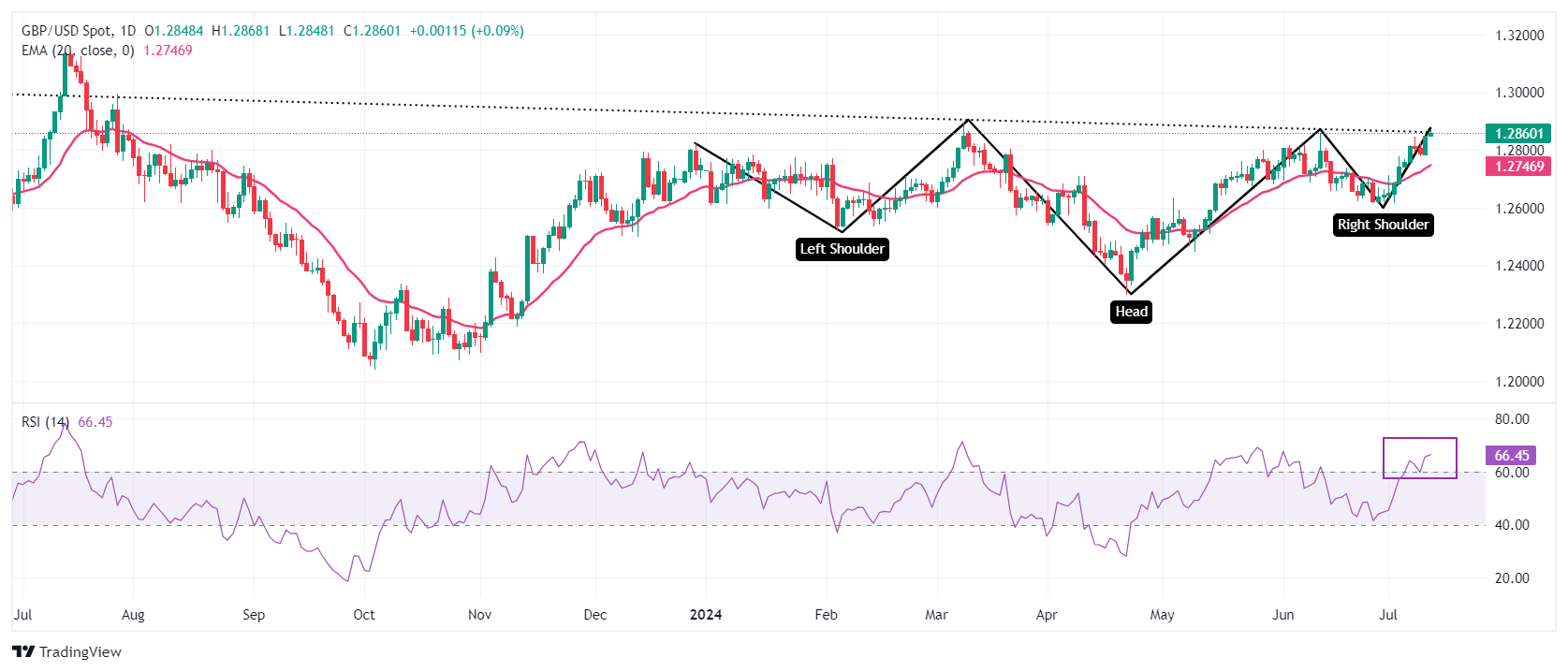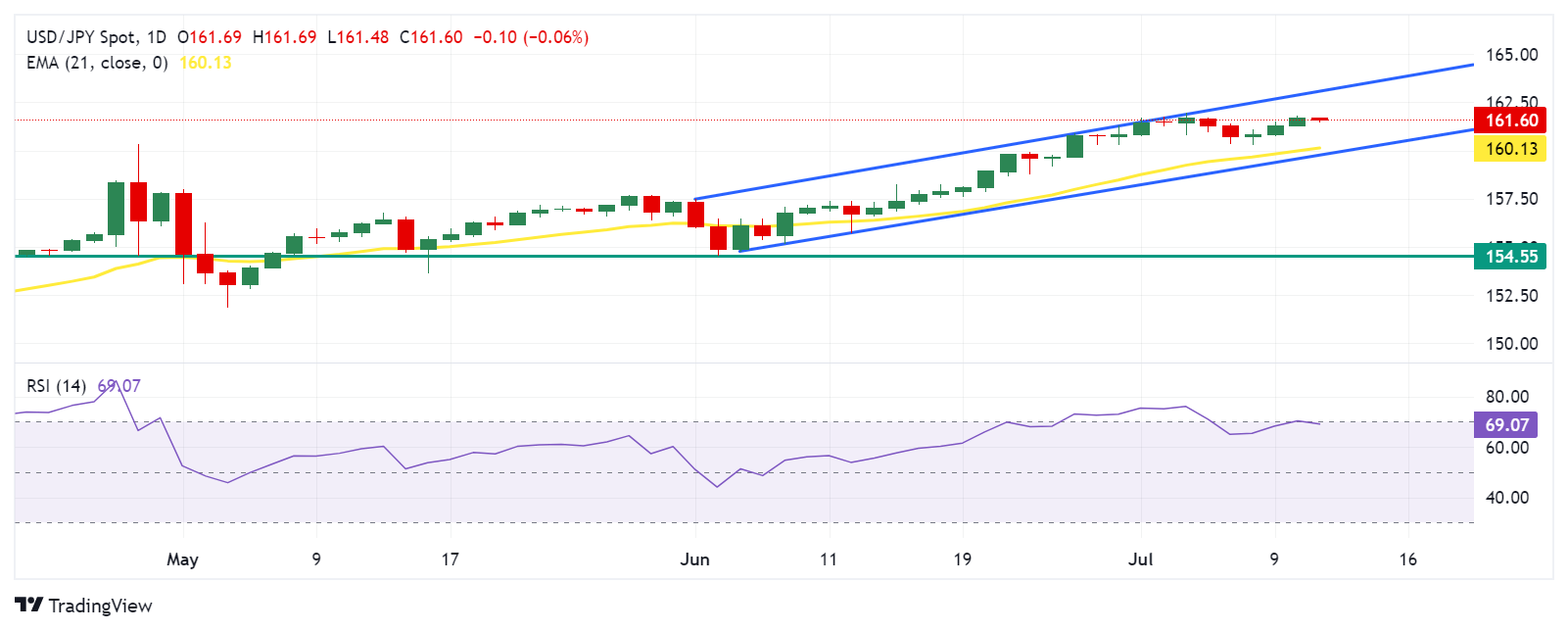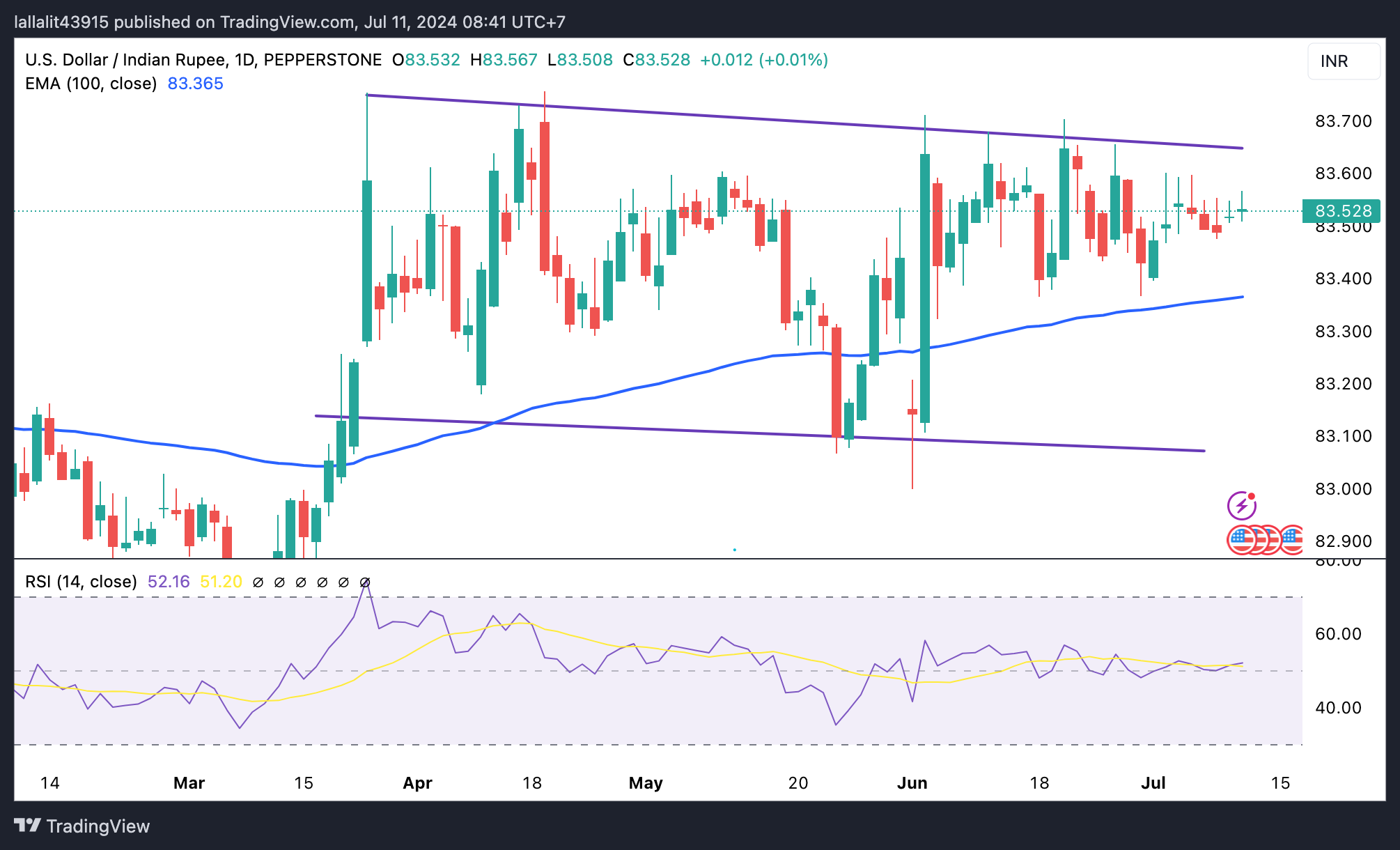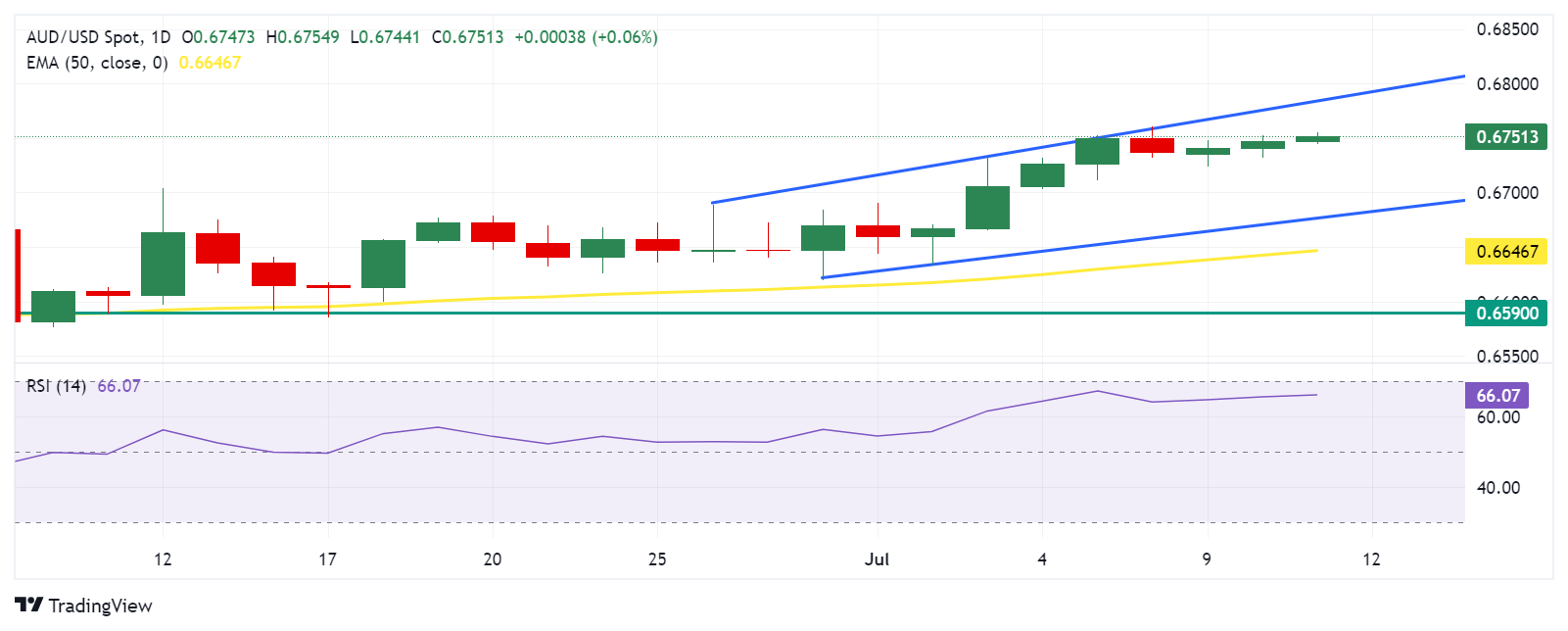- Analytics
- News and Tools
- Market News
CFD Markets News and Forecasts — 11-07-2024
- USD/CAD weakens around 1.3630 in Friday’s early Asian session.
- The softer US June inflation readings increased Fed rate cut bets.
- The recovery of crude oil prices might cap the pair’s upside.
The USD/CAD pair trades with mild losses near 1.3630 after bouncing off the two-month lows around 1.3588 during the early Asian session on Friday. The pair edges lower after the softer-than-expected US inflation readings in June have fueled the expectation of a Federal Reserve (Fed) rate cut in September, which weighs on the Greenback.
US inflation, as measured by the Consumer Price Index (CPI), declined 0.1% MoM in June, the lowest level in more than three years, the Labor Department reported Thursday. The headline CPI increased 3.0% on a yearly basis in June, compared to a rise of 3.3% in May, below the market consensus of 3.1%. The core CPI, which excludes volatile food and energy prices, rose 3.3% YoY in June compared to May's increase and expectation of 3.4%
In response to the data, investors in the fed funds futures market increased their bets that the US Fed would lower rates starting in September. According to CME Group’s FedWatch Tool, markets are now pricing in nearly 89% odds of a September Fed meeting rate cut, up from 73% on Wednesday.
Furthermore, the US weekly Initial Jobless Claims for the week ending July 6 increased by 222,000, compared to the previous week's 239,000, the lowest level since June 1. This figure came in better than the expectations of 236,000.
On the Loonie front, Canada’s Unemployment Rate rose to 6.4% and the economy lost 1,400 jobs in June, prompting a higher probability that the Bank of Canada (BoC) would cut further interest rates. The weaker Canada’s June labour market data might undermine the Canadian Dollar (CAD) and create a tailwind for USD/CAD. However, the rebound of crude oil prices might help limit the CAD’s losses, as Canada is the major crude oil exporter to the United States.
Canadian Dollar FAQs
The key factors driving the Canadian Dollar (CAD) are the level of interest rates set by the Bank of Canada (BoC), the price of Oil, Canada’s largest export, the health of its economy, inflation and the Trade Balance, which is the difference between the value of Canada’s exports versus its imports. Other factors include market sentiment – whether investors are taking on more risky assets (risk-on) or seeking safe-havens (risk-off) – with risk-on being CAD-positive. As its largest trading partner, the health of the US economy is also a key factor influencing the Canadian Dollar.
The Bank of Canada (BoC) has a significant influence on the Canadian Dollar by setting the level of interest rates that banks can lend to one another. This influences the level of interest rates for everyone. The main goal of the BoC is to maintain inflation at 1-3% by adjusting interest rates up or down. Relatively higher interest rates tend to be positive for the CAD. The Bank of Canada can also use quantitative easing and tightening to influence credit conditions, with the former CAD-negative and the latter CAD-positive.
The price of Oil is a key factor impacting the value of the Canadian Dollar. Petroleum is Canada’s biggest export, so Oil price tends to have an immediate impact on the CAD value. Generally, if Oil price rises CAD also goes up, as aggregate demand for the currency increases. The opposite is the case if the price of Oil falls. Higher Oil prices also tend to result in a greater likelihood of a positive Trade Balance, which is also supportive of the CAD.
While inflation had always traditionally been thought of as a negative factor for a currency since it lowers the value of money, the opposite has actually been the case in modern times with the relaxation of cross-border capital controls. Higher inflation tends to lead central banks to put up interest rates which attracts more capital inflows from global investors seeking a lucrative place to keep their money. This increases demand for the local currency, which in Canada’s case is the Canadian Dollar.
Macroeconomic data releases gauge the health of the economy and can have an impact on the Canadian Dollar. Indicators such as GDP, Manufacturing and Services PMIs, employment, and consumer sentiment surveys can all influence the direction of the CAD. A strong economy is good for the Canadian Dollar. Not only does it attract more foreign investment but it may encourage the Bank of Canada to put up interest rates, leading to a stronger currency. If economic data is weak, however, the CAD is likely to fall.
© 2000-2025. All rights reserved.
This site is managed by Teletrade D.J. LLC 2351 LLC 2022 (Euro House, Richmond Hill Road, Kingstown, VC0100, St. Vincent and the Grenadines).
The information on this website is for informational purposes only and does not constitute any investment advice.
The company does not serve or provide services to customers who are residents of the US, Canada, Iran, The Democratic People's Republic of Korea, Yemen and FATF blacklisted countries.
Making transactions on financial markets with marginal financial instruments opens up wide possibilities and allows investors who are willing to take risks to earn high profits, carrying a potentially high risk of losses at the same time. Therefore you should responsibly approach the issue of choosing the appropriate investment strategy, taking the available resources into account, before starting trading.
Use of the information: full or partial use of materials from this website must always be referenced to TeleTrade as the source of information. Use of the materials on the Internet must be accompanied by a hyperlink to teletrade.org. Automatic import of materials and information from this website is prohibited.
Please contact our PR department if you have any questions or need assistance at pr@teletrade.global.
